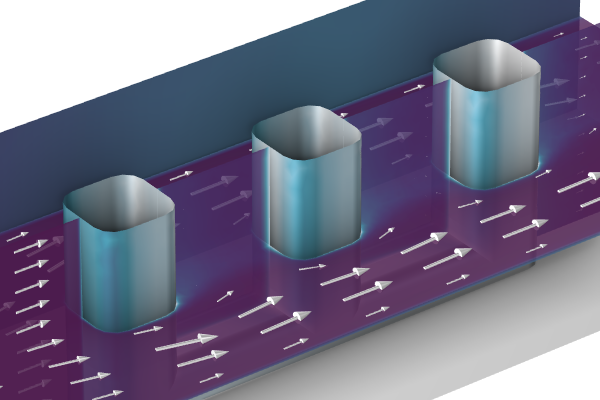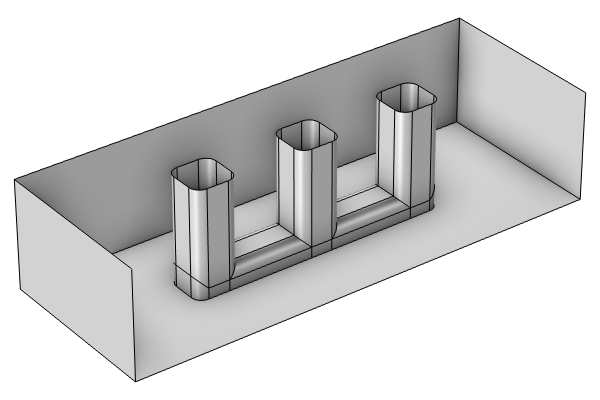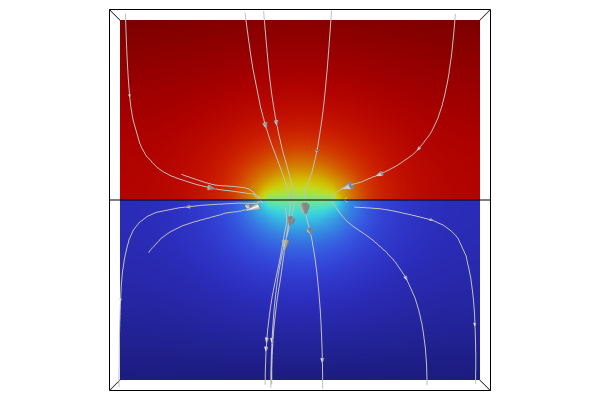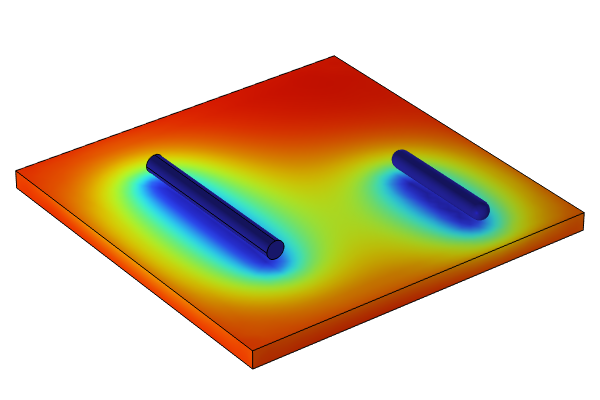Modeling Geometrically Thin Features
In Part 4 of the corrosion modeling course, we cover techniques for modeling thin geometries, such as thin films or layers of electrolytes and thin conductors. We also discuss using edge electrodes to model cathodic protection in pipelines. The Atmospheric Corrosion of a Busbar tutorial model is used as an example of how to use the Current Distribution, Shell interface to solve for the electrolyte potential in the thin electrolyte film. This model also uses the Secondary Current Distribution interface to solve for the electric potential.
We then demonstrate how adding a thin electrolyte layer affects the voltage drop in a cathodic protection model using COMSOL Multiphysics by walking through the model building process from start to finish. Lastly, the Edge Electrode and Sacrificial Edge Anode features are demonstrated in a simple 3D rectangular model to simulate the potential drop and current distributions along a pipeline submerged in seawater.
Follow along in the software by opening a new session of COMSOL Multiphysics and watching the video below.
Further Learning
For additional practice into modeling geometrically thin features for corrosion models, we recommend the Corrosion Protection of Multiple Oil Platforms and Pipeline Corrosion Protection Using Impressed Current Cathodic Protection tutorial models.
请提交与此页面相关的反馈,或点击此处联系技术支持。






